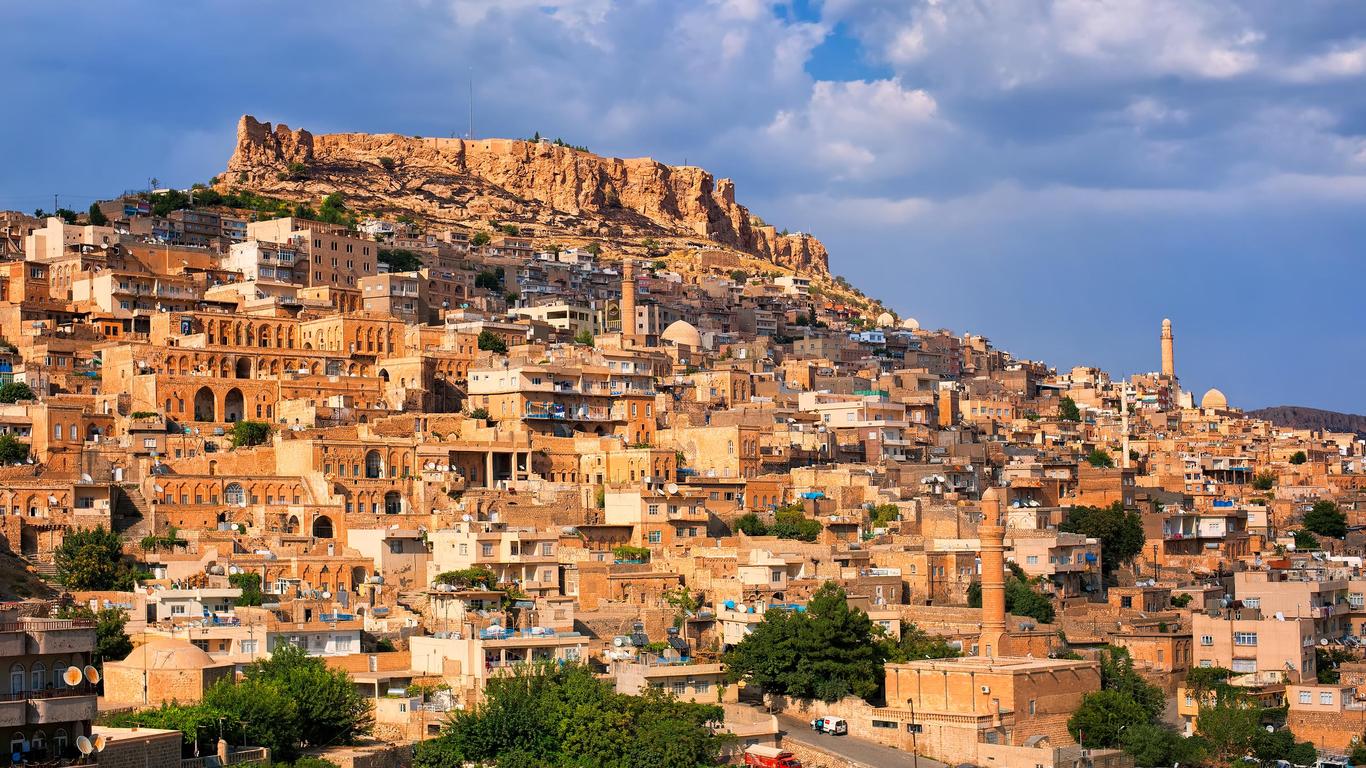Perched on a sloping hill overlooking the Mesopotamian plains, the southeastern Turkish city of Mardin is a melting pot of ancient cultures, crowned by Mardin Castle overseeing its “kingdom” from a rocky cliff. The Old City of Mardin is steeped in history, with a lively local market and a labyrinth of alleyways curving past old stone cottages and minaret-style mosques and buildings.
A trek up the steep path to Mardin Castle is worth the effort if only to stand in the midst of the bygone Roman era and the castle’s consequent extension in the 15th century, guarded by relief-carved stone lions at the gateway. A major attraction in Mardin is Zinciriye Medresesi, a theological college established in 1385 that still houses its domed mosque and mausoleum, with a meticulously carved doorway representing ancient Artuqid artistry. Traditional Turkish eateries are scattered through Old Town, many serving the famous “kunefe” cheese pastry, a dessert recipe handed down for centuries since the days of the Ottoman Empire.
The main street stretching through the old city is known as 1. Cadde, while the Northern suburbs use Vali OzanBulvari as its main thoroughfare. Minibuses connect these two sections of Mardin and service major attractions in the Old Town as well. Within the old city section, walking is required due to twisting alleys and steep stairways.
The people of Mardin identify with the ancient Syriacs and their predecessors from the Akkadian Empire around 200 BC. The city has been ruled by a plethora of dynasties, including Seljuks, Assyrians, Persians, Mongols and Ottomans, and its Islamic heritage comes from being the capital of the Turkic Artuqid dynasty from the 1100s through the 1400s. It remains a cultural enclave reflecting traditions of its modern-day Kurdish, Yezidi, Christian and Syrian residents.





